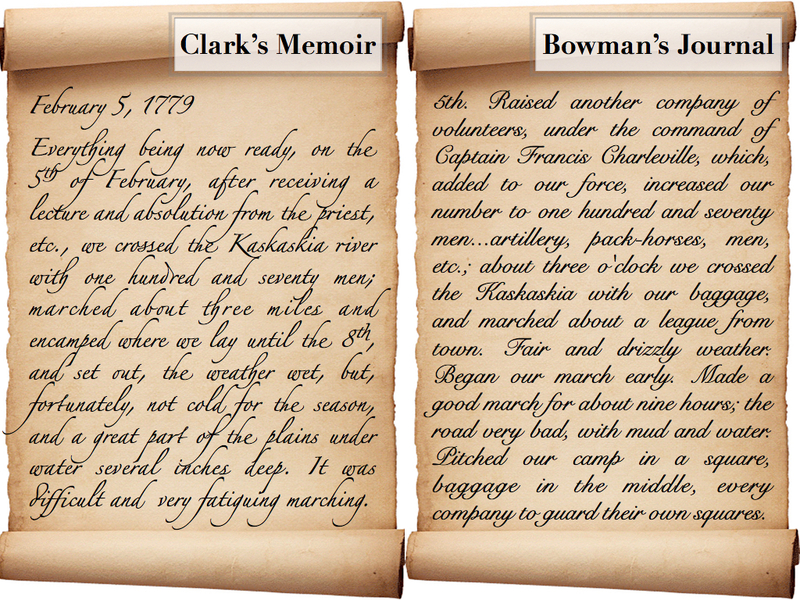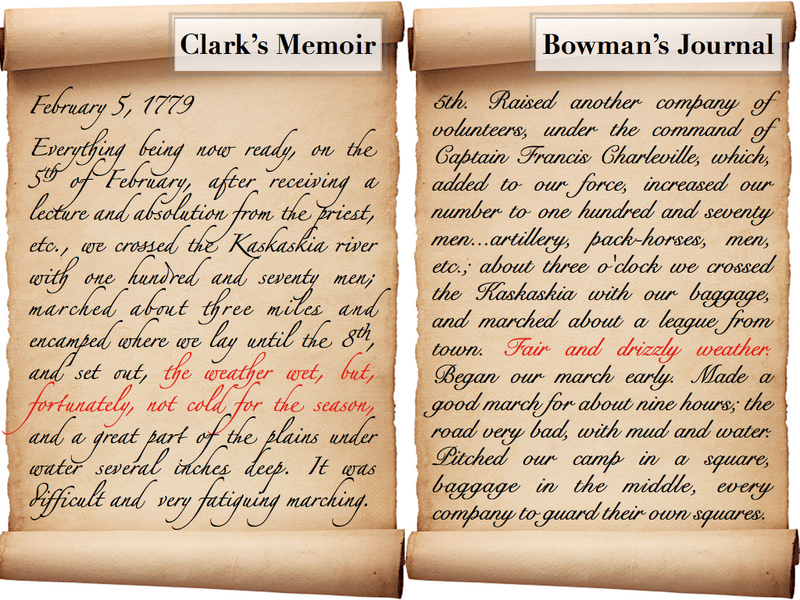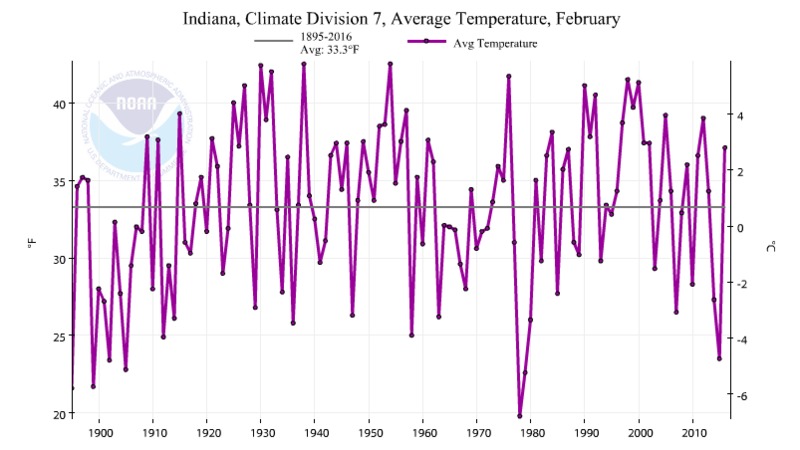Weather
Next, Clark goes on to talk about the weather. What words does Clark use to describe the conditions? How about Bowman? Record what you find.
How does Clark’s account compare to what Bowman writes about the weather?
Now compare what you found with this example.
What did we find?
Even though the language they both use is different, Clark and Bowman seem to tell a very similar story. They both comment on the precipitation (Clark describes it as “wet” and Bowman says it is “drizzly”) and the temperature (Clark writes that the weather was “not cold for the season” and Bowman calls it “fair”).
One intriguing piece of information in this section is Clark’s assessment of the weather as “not cold for the season.” But what does that mean? While we may never know exactly what temperature was like for Clark and his men, we might be able to make a guess based on some more modern data.
First of all, we always start with what we do know. We know that Clark and his men were marching through present-day southern Illinois and southwestern Indiana during the month of February in 1779. By searching on the U.S. National Oceanic and Atmospheric Administration’s website, we find that they have records of the average monthly temperatures for different regions in every state in the country. Their records start in 1895 and continue until the present. Unfortunately, the NOAA does not have records that go back to 1779, but we can use the records they do have to get a better sense of what the average temperature has been in February in southwestern Indiana for the last 122 years.
Let’s look at this graph from the NOAA:
On this graph, each dot represents the average temperature for the month of February in southwestern Indiana for every year from 1895 until 2016. The purple line connects the dots and shows how the average temperature varies from year to year. The grey line across the middle shows the average temperature in February for southwestern Indiana over the last 122 years. This overall average is 33.3°F.
From the graph, we can also see that the coldest February in southwestern Indiana (since 1895) was in 1978 when the average temperature was 19.8°F. This is -13.5°F below the average. The warmest February in southwestern Indiana (since 1895) was in 1938 when the average temperature was 42.5°F or 9.2°F above average.
Now, let’s think about what Clark said again. He wrote that the weather was “not cold for the season.” This likely indicates that Clark believed that the temperature was average or above average for the month of February. Even though the data we consulted is not for 1779, we can safely assume that the weather from the last 120 or so years has not been drastically different from what it was in the 1770s. Therefore, we can guess that Clark’s men were marching and camping in weather that was somewhere between 33.3°F (the overall average) and 42.5°F (the overall maximum).
Click here if you want to visit the NOAA website and see the data yourself.



